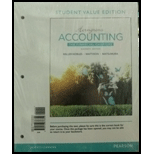
Concept Introduction
Cash Ratio: Cash Ratio is a financial liquidity ratio that measures the ability of an organization to meet its short-term obligations with only cash and cash equivalents. It is measured as a ratio of total cash and cash equivalents to current liabilities.
Debt Ratio: Debt ratio is a financial ratio that shows the percentage of total assets that is financed by the total liabilities of a company.
Debt Equity Ratio: Debt Equity Ratio is a financial leverage ratio that shows what proportion of debt an organization is using to finance its assets relative to shareholder’s equity. It is measured as a ratio of total debt to total
Earnings per Share: Earnings per Share (EPS) is a financial profitability ratio that measures the amount of net income available to common stockholders earned on one share. It is calculated by dividing net income available to common stockholders by the average (or weighted average) number of shares outstanding during a period.
Price Earnings Ratio: Price Earnings Ratio is a financial ratio for valuing a company’s stock in the market that shows what the investors are willing to pay for $1 of the company’s earnings. It is measured as a ratio of market price per share of a company’s stock to the earnings per share for a particular period.
Return on Common Stockholders’ Equity: Return on Common Stockholders’ Equity (ROCE) is a financial profitability ratio that measures the ability of a company to generate profits with the money invested by its shareholders. It is calculated by dividing net income available to common stockholders by average common stockholders’ equity for a particular period.
1.
To Compute: The ratios that are current ratio, cash ratio, debt ratio, debt to equity ratio, earnings per share, price/earnings ratio, and
Want to see the full answer?
Check out a sample textbook solution
Chapter 17 Solutions
Horngren's Accounting, The Financial Chapters, Student Value Edition (11th Edition)

 AccountingAccountingISBN:9781337272094Author:WARREN, Carl S., Reeve, James M., Duchac, Jonathan E.Publisher:Cengage Learning,
AccountingAccountingISBN:9781337272094Author:WARREN, Carl S., Reeve, James M., Duchac, Jonathan E.Publisher:Cengage Learning, Accounting Information SystemsAccountingISBN:9781337619202Author:Hall, James A.Publisher:Cengage Learning,
Accounting Information SystemsAccountingISBN:9781337619202Author:Hall, James A.Publisher:Cengage Learning, Horngren's Cost Accounting: A Managerial Emphasis...AccountingISBN:9780134475585Author:Srikant M. Datar, Madhav V. RajanPublisher:PEARSON
Horngren's Cost Accounting: A Managerial Emphasis...AccountingISBN:9780134475585Author:Srikant M. Datar, Madhav V. RajanPublisher:PEARSON Intermediate AccountingAccountingISBN:9781259722660Author:J. David Spiceland, Mark W. Nelson, Wayne M ThomasPublisher:McGraw-Hill Education
Intermediate AccountingAccountingISBN:9781259722660Author:J. David Spiceland, Mark W. Nelson, Wayne M ThomasPublisher:McGraw-Hill Education Financial and Managerial AccountingAccountingISBN:9781259726705Author:John J Wild, Ken W. Shaw, Barbara Chiappetta Fundamental Accounting PrinciplesPublisher:McGraw-Hill Education
Financial and Managerial AccountingAccountingISBN:9781259726705Author:John J Wild, Ken W. Shaw, Barbara Chiappetta Fundamental Accounting PrinciplesPublisher:McGraw-Hill Education





